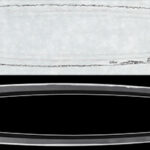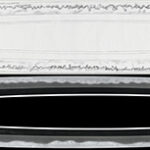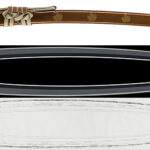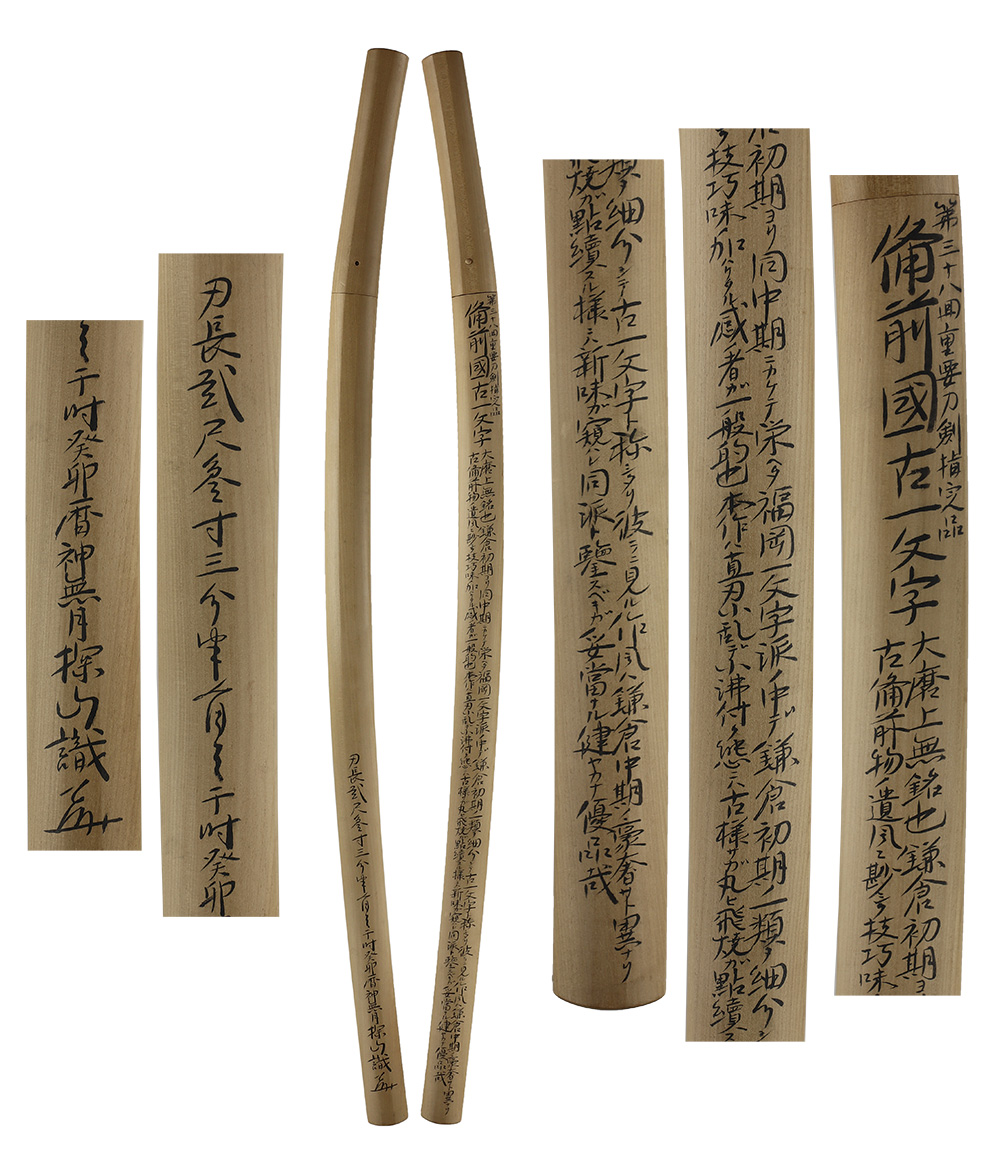Ordering number:23554
Katana in Shirasaya (38th NBTHK Juyo Token)
Signature: Mumei (Ko-Ichimonji)
無銘(古一文字)
Saya-gaki by Tanobe-sensei:
"This blade is an unsigned work of the Ko-Ichimonji school of Bizen Province. The Ko-Ichimonji school flourished from the early to mid-Kamakura period and is considered an early subdivision of the Fukuoka Ichimonji school. Unlike the grandiose style of mid-Kamakura period swords, the works of Ko-Ichimonji exhibit refined craftsmanship. This blade features a straight hamon with small irregularities, adorned with small nie. The age and craftsmanship of the blade can be seen in the sporadic tobiyaki, indicating a high-quality work of this school. The blade length is 2 shaku 3 sun and a half (approximately 71.4 cm). Signed by Tanzan."
Rating:
This blade is classified as a "Saijyo Saku" (highest grade) among Mumei (Ko-Ichimonji) works.
It has been polished and is rated as Jyojyo (superior polish).
Habaki: Gold-foiled double habaki.
Blade Length: 70.9 cm (27.91 in)
Curvature: 3 cm (1.18 in)
Mekugi-ana: 3 holes
Width at Base: 2.95 cm (1.16 in)
Width at Yokote: 2.03 cm (0.8 in)
Kasane: 0.66 cm (0.26 in)
Sword Weight: 800 grams
Era: Early Kamakura period, around 1207 (Shōgen era).
Shape: A blade with deep curvature and a slightly long kissaki.
Jigane: A well-forged itame mixed with mokume, with visible hada and faint utsuri.
Shinogiji: Itame mixed with mokume.
Hamon: Nie-deki, forming a double-edged hamon that returns in a small round shape along the bōshi.
Features:
Ko-Ichimonji blades are early works of the Fukuoka Ichimonji school, characterized by their sense of antiquity.
While this blade originally had a ko-chōji midare hamon, it later evolved into the more flamboyant Fukuoka Ichimonji style.
Aoi Art’s Comment:
"This blade was crafted in the early Kamakura period, following the end of the Heian period. It is a work from the era when smiths like Sokushu and Sukemune were active. The blade reflects the atmosphere of the time before the emergence of the more flamboyant Fukuoka Ichimonji style. Despite being over 817 years old, it retains its original brilliance. The blade's hada is well-visible, and the shinogiji is also clearly defined. We highly recommend this precious piece to you."
38th NBTHK Juyo Token
Aoi Art estimation paper
Whole Oshigata
Order Form
Related Items:
 Tachi : Ichi(judged as Yoshioka Ichimonji)(NBTHK the 41st Juyo Token)
Tachi : Ichi(judged as Yoshioka Ichimonji)(NBTHK the 41st Juyo Token)
 Wakizashi: Mumei (Yoshioka Ichimonji)
Wakizashi: Mumei (Yoshioka Ichimonji)
 Katana: Nobutsugu(Aoe)(65th NBTHK Juyo Token)
Katana: Nobutsugu(Aoe)(65th NBTHK Juyo Token)
 Katana:Signature: Mumei (attributed to Den Cho Aritoshi)(25th NBTHK Juyo Token)
Katana:Signature: Mumei (attributed to Den Cho Aritoshi)(25th NBTHK Juyo Token)
 Katana:Mumei (Unsigned) [Attributed to Enju] (19th NBTHK Juyo Token)
Katana:Mumei (Unsigned) [Attributed to Enju] (19th NBTHK Juyo Token)
 Katana: Mumei(Unsho)(Consignment Sale)(the 58th NBTHK Juyo Token)
Katana: Mumei(Unsho)(Consignment Sale)(the 58th NBTHK Juyo Token)






